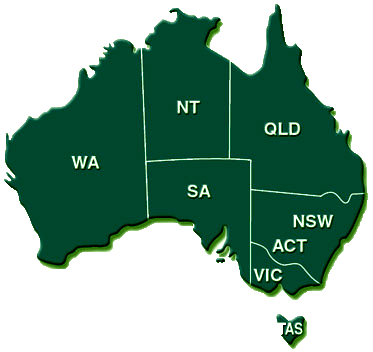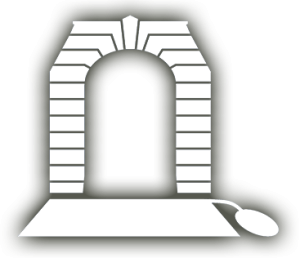Soldiering has no place for the faint-hearted. In its tight, robust world, the men and women of our armed forces look death in the eye in jungles and muddy fields; they live with bare rations and without home comforts; they sleep uneasily under the stars; and they get bombed, shot at and killed.
They are a unique bunch, perhaps best described by celebrated World War I official correspondent Charles Bean when asked to define the Anzacs: “Anzac stood and still stands for reckless valour in a good cause — for enterprise, resourcefulness, fidelity, comradeship and endurance that will never own defeat.”
Surely then, these unique men and women of reckless valour are entitled to define themselves within their myriad sections, units, specialties and skill sets, by the use of esoteric, even ethereal images, designed and created as a means of bonding bodies and minds that depend on each other in the most mortal manner.
It happens in the corporate world. Company logos carry instant branding and messages about who we are and what we stand for. But according to last week’s decree by Lieutenant General Angus Campbell, who will take over as chief of defence when Air Chief Marshal Mark Binskin steps down in July, it is no longer acceptable for Australian Army units to involve death and destruction in its symbols.
This is a politically correct move that sits uneasily with those involved in the business of death and destruction. It has been widely condemned by the men and women war fighters who live in and by the cultures of the defence forces and the subcultures of their units.
Campbell issued his directive last week shortly after it was announced that he was being promoted from Chief of Army to chief of defence. The directive applies only to army units.
Banned are “symbols of death” such as skulls and crossbones, the Phantom, the Punisher, Spartans or the Grim Reaper, in patches, badges or imagery.
Campbell says the “display or adoption of symbols, emblems and iconography is at odds with the army’s values and the ethical force we seek to build and sustain”.
“Such symbology is never presented as ill-intentioned and plays to much of modern popular culture, but it is always ill-considered and implicitly encourages the inculcation of an arrogant hubris and general disregard for the most serious responsibility of our profession, the legitimate and discriminate taking of life,” he said.
“As soldiers our purpose is to serve the state, employing violence with humility always and compassion wherever possible. The symbology to which I refer erodes this ethos of service.”
No doubt Campbell chose his words carefully. It is worth focusing on some of them. He speaks of the army’s values and ethics. Here it is hard to avoid the conclusion that he is playing to the politically correct civilian brigade and is seeking to sanitise war.
It’s one thing for a static peacetime army to live harmoniously within the communities surrounding its bases and quite another to participate in the horrors of war.
War is hell, as we are reminded forcefully this Anzac week. Those who lived through the mud, slush, exploding shells and hellish butchery of the Western Front are unlikely to be moved by the sophisticated modern-day call for the army to have values and ethics.
Men on the battlefield are trained not to question the rights and wrongs of orders or whether they are value-tested or ethically pure. In the words of poet Alfred, Lord Tennyson, “theirs not to reason why; theirs but to do or die”.
Death and war go hand-in-hand. Yet, according to a Defence Department spokesman, the most important thing is to ensure that all army symbols “align with army values of courage, initiative, respect and teamwork”, adding that “death symbology demonstrates a general disregard for the most serious responsibility of the army’s profession — the legitimate and discriminate taking of life”.
“It all goes towards fostering camaraderie and bonding”
When the ultimate outcome is the taking of lives, albeit legally, it is hardly surprising that those asked to perform that duty see themselves as different and out of the ordinary.
That, in turn, creates an entirely understandable esprit de corps among the troops. They rely on each other for their lives; they bond and share a camaraderie that seeks expression through symbols that proclaim instant identity and shared experiences.
Campbell is savvy enough to know there would be objections to his directive, saying he appreciated that “some will rile at this direction, but I am adamant that this is right for the army”.
Skip Telford is one former army engineer who disagrees and hopes that common sense will prevail. Telford, 71, who served with the 1 Field Squadron in Vietnam, says he can’t see the point of the directive.
“There’s nothing wrong with images of war,” he says. “They’ve done stuff like this in all wars … my dad, who fought in New Guinea, had a patch with a skull and crossbones on it.
“It all goes towards fostering camaraderie and bonding — and that can last well beyond the war.”
Telford, from Yankalilla in South Australia, is a member of the Veterans Motorcycle Club whose logo depicts a skull bearing a slouch hat.
The use of symbolism in war has been going on for eons. Most images have sought to invoke fear, aggression and strength and to encourage civilian capitulation. Swords, daggers, crossed rifles, two-headed eagles and skulls and crossbones appear in military iconography across the world.
The US is the home of modern military iconography. It is a tradition that began in World War I when artillerymen signed bombs and shells with chalk, with messages such as “Merry Christmas Kaiser Bill”.
There was never any hope that the message would be received among the exploding shell and shrapnel fragments, but photographs of the shells before they were fired proved to be good propaganda. The habit took off in World War II when aircraft routinely was adorned with names and artwork. US pilots were encouraged to put their names on their assigned aircraft along with bomb symbols to denote how many missions had been undertaken. The aircraft that dropped the first atom bomb on Hiroshima carried the name Enola Gay, chosen by pilot Paul Tibbets to honour his mother.
Tibbets, out of respect for his mother, chose not to add an image of a scantily clad woman on the nose of his B-29 bomber. But he was unusual; images of curvy, pneumatic women in the 1940s style adorned most bomber aircraft noses along with names such as Memphis Belle, Avenging Angels, Night Mission or Sheer Madness. Fighter pilots, with less space to work with, often contented themselves with depictions of sharp teeth on the air intakes of aircraft such as Mustangs.
This form of art was encouraged because it promoted a sense of belonging. The tradition continues today when patches are issued for just about every conceivable reason — even test flights of new aircraft. Hundreds of them are available online, along with offers to create a patch to mark any event.
Popular culture has contributed myriad images ranging from the Grim Reaper to movie characters such as Darth Vader, the Simpsons or Disney cartoon favourites such as Goofy. Many carry inspirational messages, such as “We will not falter. We will not fail”, but some attempt a darker sense of humour.
A patch issued after the first Gulf war carries the slogan “Desert Storm — Iraqi Urban Renewal”.
Another, depicting testicles caught in a steel-gloved hand, declares, “To err is human — to forgive is not SAC (Strategic Air Command) policy”. Yet another, commemorating behind-the-border activities in Pakistan, carries the image of the Punisher with the words, “God will judge our enemies. We will arrange the meeting.”
By comparison, official Australian logos are tame. Our most elite fighting force, the Special Air Service, displays a simple dagger with wings.
It is hard to pinpoint exactly what Campbell wants to stamp out. A photograph of posthumous VC winner Cameron Baird wearing green and black face paint in a likeness of the Punisher on display at the Australian War Memorial would appear to fall foul of the ban. But AWM head and former defence minister Brendan Nelson declared he would not remove or alter the image, adding it would be “removed over my dead body”.
The Royal Australian Air Force, which is outside the army directive, has the Punisher death symbol on the nose of its new early-warning Wedgetail surveillance aircraft operating over Iraq and Syria as part of the coalition battling Islamic State fighters.
An image of the aircraft on the Defence Department’s public affairs website highlights the confusion over how the new rules are to be applied.
Retired brigadier Geoff Hand, former commander of the 13th Brigade based in Perth, says he believes Campbell is walking a tightrope between the war-fighting men and women of the army and the bureaucratic end of the organisation, which is much more exposed to the pressures of political correctness.
Hand says there are tensions between society’s values and concerns relating to the army being in good stead to fight a war and the army’s values of courage, initiative, respect and teamwork.
“The defence force values are not necessarily shared by some of the subcultures within the younger men and women of the war-fighting units,” he says. “What Angus is doing is trying to take away the nasty edge of some of the subcultures.
“If this nasty element were evident only in the barracks, Angus could look the other way. But he is in a position where he has to deal as much with the political class, where political correctness is part of the daily grind, as he does with the war-fighting elements,” Hand says.
“These two worlds, normally kept apart, have come together. Wider society has to accept it needs to toughen up and support its war-fighting capabilities — and our military personnel are very good at it — and the war fighters have to accept their leaders’ need to keep a close eye on society’s culture.
“There is room to move on both sides. There is a need to find the middle ground.”
Perhaps Campbell has already arrived at this conclusion. Yesterday he appeared to waver from his adamant belief that his directive was right for the army when it was confirmed that commanding officers had been told they could apply to the Chief of Army to seek exemptions allowing them to retain symbols or icons that would have been covered by the original directive.
That may not be a full backdown, but it appears to recognise that there has been no demonstrable harm done by existing iconography, even if it breaches the new guidelines.
The Australian By MARK DAY April 26th, 2018






